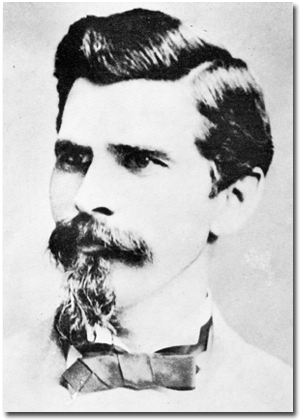
The History:
James McLaughlin (1842-1923) was born in Ontario, Canada. His wife, Marie, was was one-quarter-Sioux. Her maternal grandmother had been Ha-za-ho-ta-win, of the Medawakanton Band of the Sioux Tribe. Marie Louise Buisson was born on December 8, 1842 at Wabasha, Minnesota, which was then Indian country. She lived there until she was fourteen years old, when she was sent away to school at Prairie du Chien, Wisconsin. James McLaughlin worked as an itinerant blacksmith, in 1864 he married Marie, and in 1865 he became a United States citizen. In 1871 he was hired by Major W.H. Forbes as blacksmith and general overseer of the Devils Lake Agency which was in North Dakota (at that time North Dakota was not a state, the Devils Lake Agency was just in the Dakota Territory). He developed excellent relations with the local tribes and was officially appointed to the position of agent in 1876.
After the Sioux surrendered to military authorities they were brought by steamboat from various points on the upper Missouri to be permanently located on the Standing Rock Reservation. James McLaughlin was promoted and transferred to work at the Sioux reservation at Standing Rock in 1881. At that point the path to a decent life was through assimilation, but it is obvious that he respected the culture of the tribes with which he worked and formed good relationships with many tribal leaders. However, he was most widely known for his conflict with Sitting Bull which resulted in Sitting Bull's death on December 15, 1890.
Major James McLaughlin as Agent at Devils Lake - photograph held by the North Dakota Historical Society.
After the Sioux surrendered to military authorities they were brought by steamboat from various points on the upper Missouri to be permanently located on the Standing Rock Reservation. James McLaughlin was promoted and transferred to work at the Sioux reservation at Standing Rock in 1881. At that point the path to a decent life was through assimilation, but it is obvious that he respected the culture of the tribes with which he worked and formed good relationships with many tribal leaders. However, he was most widely known for his conflict with Sitting Bull which resulted in Sitting Bull's death on December 15, 1890.
In 1895 James McLaughlin was promoted to Inspector for the Indian Department and the Department of the Interior. He worked there until his death on July 28, 1923
The Collection:
During most of his years as an agent, and later as an inspector, Major McLaughlin kept copies of important correspondence. At his death the collection passed to his son, Rupert Sibley McLaughlin. After Rupert's death in 1923 his wife sold portions of the collection to historians. Usher L. Burdick obtained the majority of the papers in the early 1930s and donated them to Assumption Abbey in the late 1940s. In 1967 the Louis W. and Maud Hill Family Foundation donated funds to Assumption Abbey so that the missing portions of the collection could be purchased and the collection as a whole could be organized, cataloged, and microfilmed. Some of the missing portions of the collection could not be found, most notably the correspondence from 1876-1878. Supplementary material covering the years 1870-1895 was collected from the National Archives and microfilmed (Rolls 31-37).
The complete microfilm collection was donated to Special Collections & University Archives by Professor James Fenelon.
The Finding Aid:
The Guide to the Microfilm Edition of the Major James McLaughlin Papers provides a rough reel guide to the collection. The last two rolls of microfilm provide a more detailed finding aid.
References:
Pfaller, L. (Ed.). (1969). The guide to the microfilm edition of the Major James McLaughlin papers. Richardton, N.D.: Assumption College.